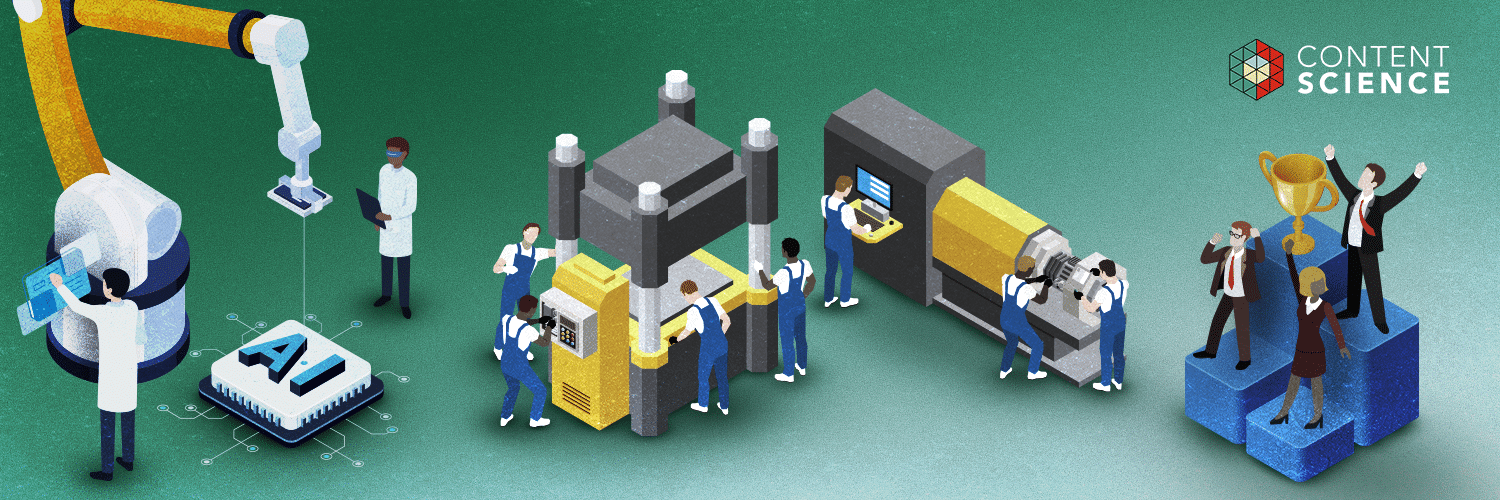
Automation and personalization are two of the hottest topics in the content world today. The value of delivering content that anticipates and satisfies user needs at the individual level is easy to understand, and companies that have accomplished it have seen significant increases in effectiveness. But you may be asking yourself, “How do I even get started?”
This piece is the first in a three-part series on how to employ machine learning to enable content automation and optimize your content experience. Machine learning requires a wealth of data to perform effectively, and the right content delivery system to interpret it. This data should work to improve your users’ experience with your content in real time, as well as to help you optimize your content to grow your digital business.
This series will cover what you need to get started, what the process of automation and personalization through machine learning actually looks like, and how to use the data your systems are collecting to drive your publishing strategy.
A sophisticated content delivery system infers a user’s intent from detailed user data, then matches that intent with the appropriate content based on the content’s attributes and past performance. But what data do you even need, and how can that inform the content experience?
What You’ll Need to Get Started
1. User Data
User data is the first piece needed to employ machine learning to enable content automation. There has never been more data available about your users and potential customers, and that data provides potential context for what kind of content will best resonate with them.

To connect this data to individual users you’ll need a table in your database dedicated to user IDs and records. Each user should have a master ID that can be associated with all other user touchpoints and records, from your web analytics to your CRM. Beyond that, user data exists on two levels – identification and behavioral.
Identification data is the basic information that helps you form a picture of this user. Begin with basic demographics:
- Age
- Gender
- Location
- Technology
This information can be captured by your web analytics platform or by custom code written into your website.
If it makes sense for your business, it’s easy to strengthen this data by allowing your users to self-identify their interests and other useful data points by signing up or creating a profile or account on your website. Even basic information, like the user’s company or title in a B2B context, can be analyzed and associated with a likely set of interests. Reviewing your customer personas can also help you identify the data points you most want to capture, as you’ll look to align your users with specific personas to define their intent.
On the other hand, behavioral data uses information about your users’ interactions with your content. You’ll need to capture all interactions with your content in all locations – website, apps, email, social, etc. – in a single database. Each system should provide a unique user ID, along with the details of the interaction. Linking interactions across multiple touchpoints or channels requires a single point of reference, such as a unique login. Once this is accomplished, you can match all customer interactions to the customer’s master ID, which provides the most complete context for how this customer uses your content.
You also need to be able to group interactions into sessions to best understand the sequence of events that lead to valuable behaviors or conversions, both within a single session and in a user’s lifetime interactions with your content. This is the key piece that allows you to optimize your content’s delivery for specific users. Once you understand all of these elements, you can infer the user’s intent, and match this with the most appropriate content.
2. Content Data
Finding the appropriate content relies on having data connected to your content. The data you need to have in place falls under two categories: qualitative and performance.
Qualitative data is all about cataloging your content modeling and recording attributes that your content management platform can query. This means capturing:
- Content type: Is it an article, a video, or another type of content?
- Tags, themes, topics, or subjects: What does the content cover?
- Source of the content: Who is the author? Is this third-party content?
- Target persona: What type of customer is this content addressing?
- User journey stage: When is a potential customer most likely to need this content?
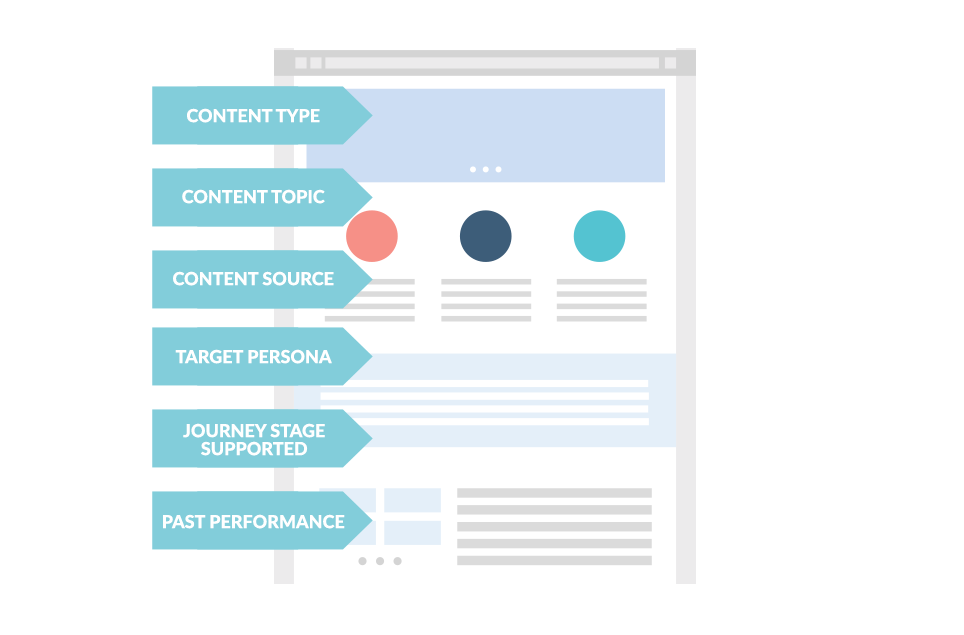
The best thing about this data is that it’s known before the content is even published, so it can be applied at the point of creation. The most important element for this data is consistency. Using a consistent set of tags with strict definitions and being thorough with their application will help you achieve this.
Performance data is compiled from your users’ behavior and perceptions over time. Your content should be authored with a specific, measurable goal in mind; and that content’s performance is based on its ability to get your users to take the best next step towards that goal.
With this data, you’ll need to be able to speak to:
- How many users of this content accomplished their goal
- How they got to that content, both the channel through which they landed on your site originally and the path they took to get to the piece of content
- Where they went next – was their next step logical and closer to conversion?
You can make this data even stronger by complementing it with user perceptions. Using either a rating or voice-of-customer survey tool, you can speak to the elements of the content that make it successful (or not), and understand why users do – or don’t – reach their goals by using it.
Collecting the data you need about your users and content is the first step and one you can begin today. But to truly automate, personalize, and optimize the content experience, you need a content delivery system that knows how to interpret this data.
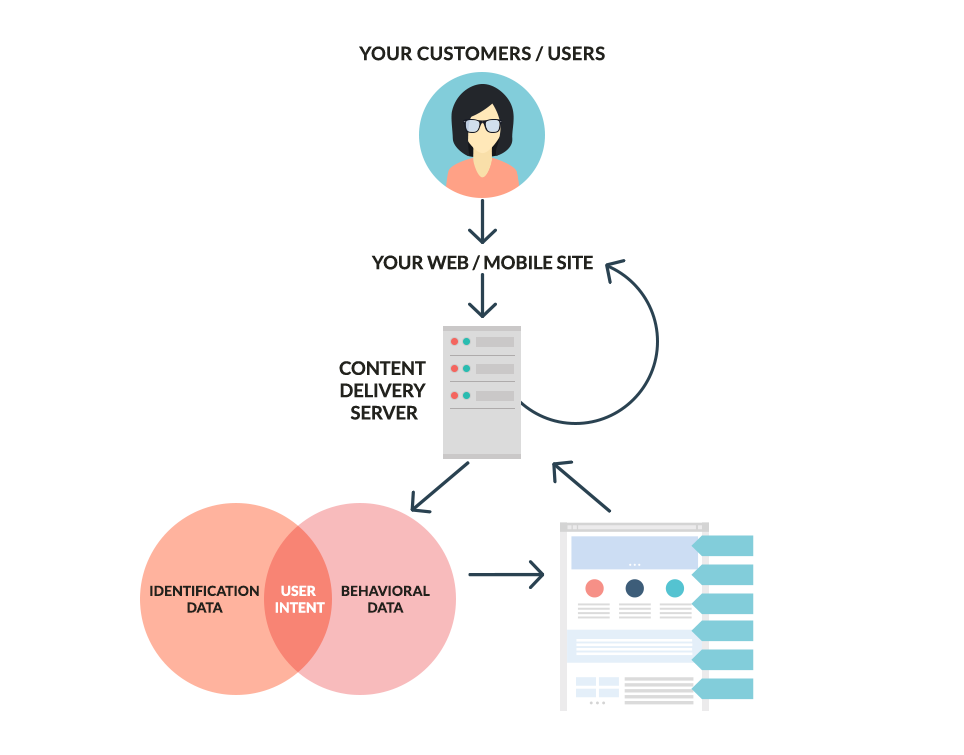
3. The Right Content Technology Stack
Relying on machine learning to automate and personalize content experiences requires a lot of data, but what does the system delivering the content look like?
Your content technology needs to be able to use the data above to deliver the right content to the right user at the right time. Gartner recently defined this approach as the Best Next Customer Experience, which it describes as a “paradigm that considers the different actions that can be taken for a specific customer and decides on the best option based on alignment between the customer’s context and the company’s objective.” This approach anticipates a broader spectrum of potential customer interactions, anticipates the user’s desires, and caters to them with the appropriate content.
Because the most appropriate content for a specific user can vary, you may focus less on creating complete documents and focus more on creating reusable content components. These components are tagged and measured, and your content management platform will need the ability to match those components with the appropriate users in the right context. It will look at the user’s identification data, their current and past behavior with your content, infer the user’s intent, and match that intent to the content.
You also need your content technology to learn from user behavior. Conversion rates to measurable goals need to update in real time so content that effectively moves users along their journey is delivered the most often. If a user does not accomplish their goal using the content optimized for them, in their next session the content management platform will need to attempt a different content approach or delivery. This ability to learn from content performance and user behavior is crucial to ensuring your users receive the experience that best suits their needs.
Finding the right content management platform is a crucial step, but even the best systems will only be as good as the user and content data you’re feeding it. Once all three of these elements are in place, you can begin the process of automating your content for individual users and their unique needs.
Learn how to automate your content in part two of this series.
Events, Resources, + More
Workshop: Are You Ready for AI?
Is your organization really ready for AI at scale? Let the Content Science team guide your leaders through assessing 4 areas of readiness.
Course: Prompting Text Generative AI
Learn how to bring out the full potential of text generative AI to create impactful content from this on-demand course.
Webinar: Benchmarks for Content Effectiveness
It's not about more content. It's about more effective content. Gain tips based on Content Science's unique research + experience.
The Ultimate Guide to End-to-End Content
Discover why + how an end-to-end approach is critical in the age of AI with this comprehensive white paper.



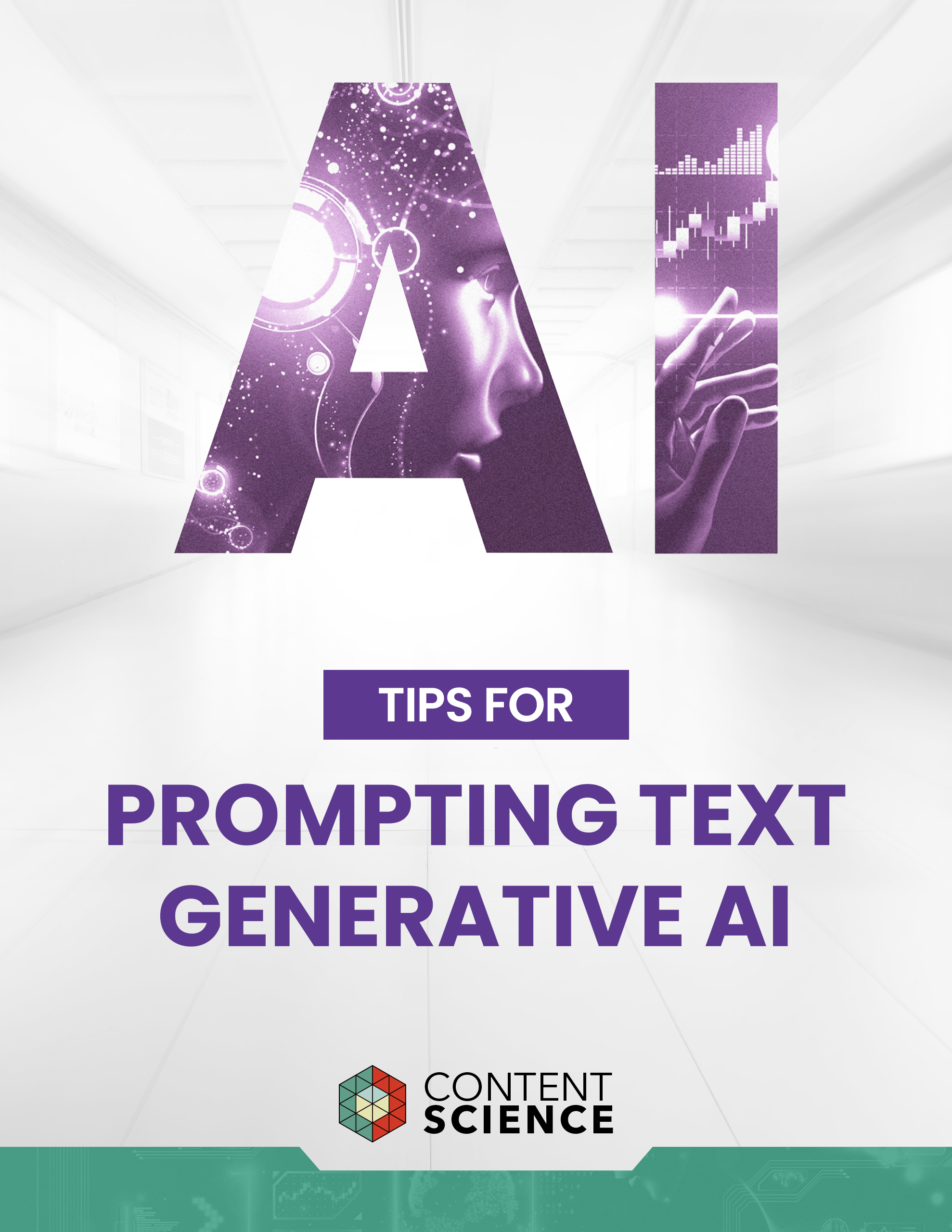
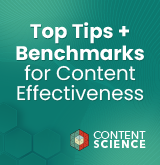

Comments
We invite you to share your perspective in a constructive way. To comment, please sign in or register. Our moderating team will review all comments and may edit them for clarity. Our team also may delete comments that are off-topic or disrespectful. All postings become the property of
Content Science Review.